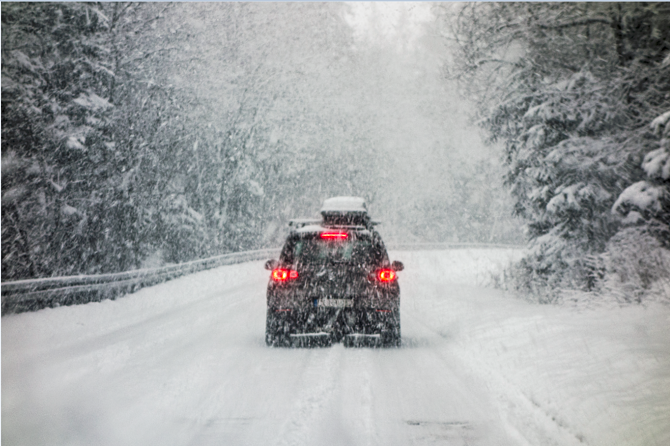
Removing snow and ice from concrete driveways is a major concern for many homeowners living in regions with significant winter precipitation. By ridding their driveways of unwelcome winter weather, they prevent slips and falls, extend the life of their concrete, and lessen the need for concrete repair work. A few of the most effective ways to remove snow from your concrete driveway are briefly discussed below.
Salt Applicants
After shoveling off concrete, salt is often applied to melt the residue of snow and ice and keep it melted. In reality, however, rock salt only lowers the freezing temperature of water from 32° to 25° F ( 0° to -3.89° C) . Once the thermometer dips below 25° F (-3.89° C), the water, which has already seeped into the porous concrete, refreezes. When temperatures rise again past 25° F (-3.89° C), the water melts again, and so on, in a concrete-killing freeze/thaw cycle. Using calcium chloride, instead of rock salt, brings the refreezing point down to -25 rather than +25. This essentially makes your concrete freeze-proof for the whole winter season.
Snow Blowers
A more advanced, though also more expensive, solution is to purchase a snow blower. This speeds up the removal process, but it also requires storage and maintenance of the machinery. Some models run on gas, and thus add significant fuel costs, but others use an electric cord or a battery to power them. Safety is by far the greatest concern with snow blowers, with over 5,000 people being injured by them annually. This mainly stems from users trying to manually dislodge a snow-jammed auger, only to have the engine jump back into gear while their hands or fingers are in a dangerous position. For this reason, the engine should be shut off, the clutch disengaged, and a broom stick used to dislodge the jammed snow. It is also advisable to find a model with a "Dead Man's Switch," which keeps the blades from rotating.
Heated Driveways
An increasingly popular form of snow removal is the installation of a heated driveway system. Certainly, the convenience of such a system is clear--install once and you will save time and effort all winter long. However, it’s important to consider whether or not this system is really worth the cost. For most homeowners who’d have to demolish an existing driveway to install the heating system, the cost will be around $14 - $24 per square foot (approximately $201.50 - $345.43 CAD per square meter). So a 20x50 ft. (6x15 m) driveway can end up costing over $15,000 (approximately $20,064 CAD) for a mechanism that is only helpful in the winter There are two popular options for interior heated driveway systems-- a hot water pump system or an electric current generated on wires--and both can cost a great deal in energy expenses to operate. Lastly, while you can install a sensor system to ensure that the system turns on only when it snows, that is an added expense to both installation and operation.
One way to combat the costs of a heated driveway while still retaining the benefits it presents is to utilize heated floor mats. While most residential mats are useful for protecting your walkways and the safety of your steps, industrial sized mats can absolutely be repurposed as heated driveway mats. They melt snow immediately, can be driven on with ease and safety, and cost a fraction of the price of a full heated driveway installation. The mats can be turned on and off with an energy-efficient switch in tune with the snowfall, and rolled up for efficient storage in the spring and summer.
Salt, snowblowers, and heated floor mats are among the most practical ways to keep your concrete free of snow and ice. Each method has its own set of advantages and disadvantages, and the homeowner will need to balance cost, effectiveness, ease of use, time-investment, and safety concerns in making his final decision.


